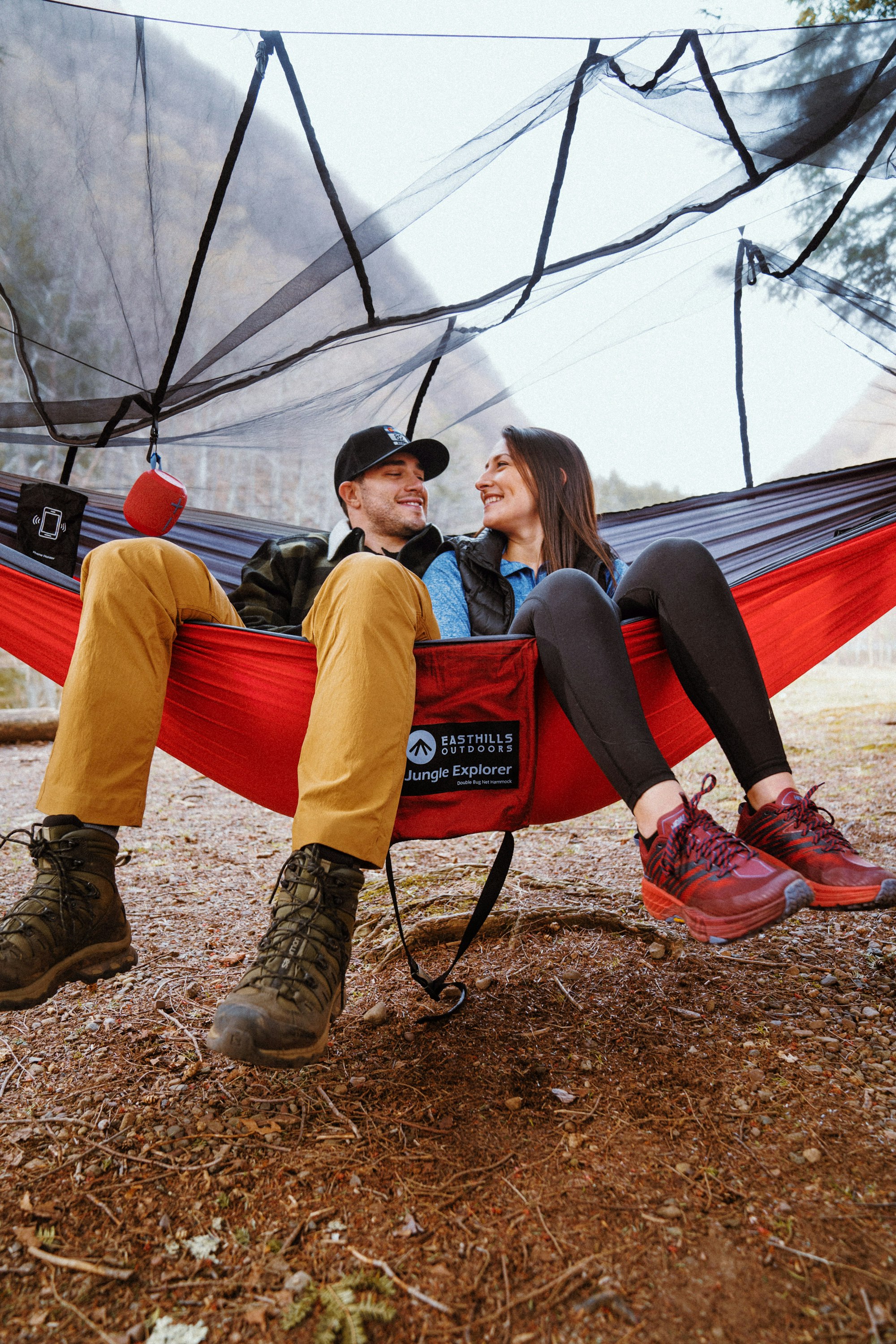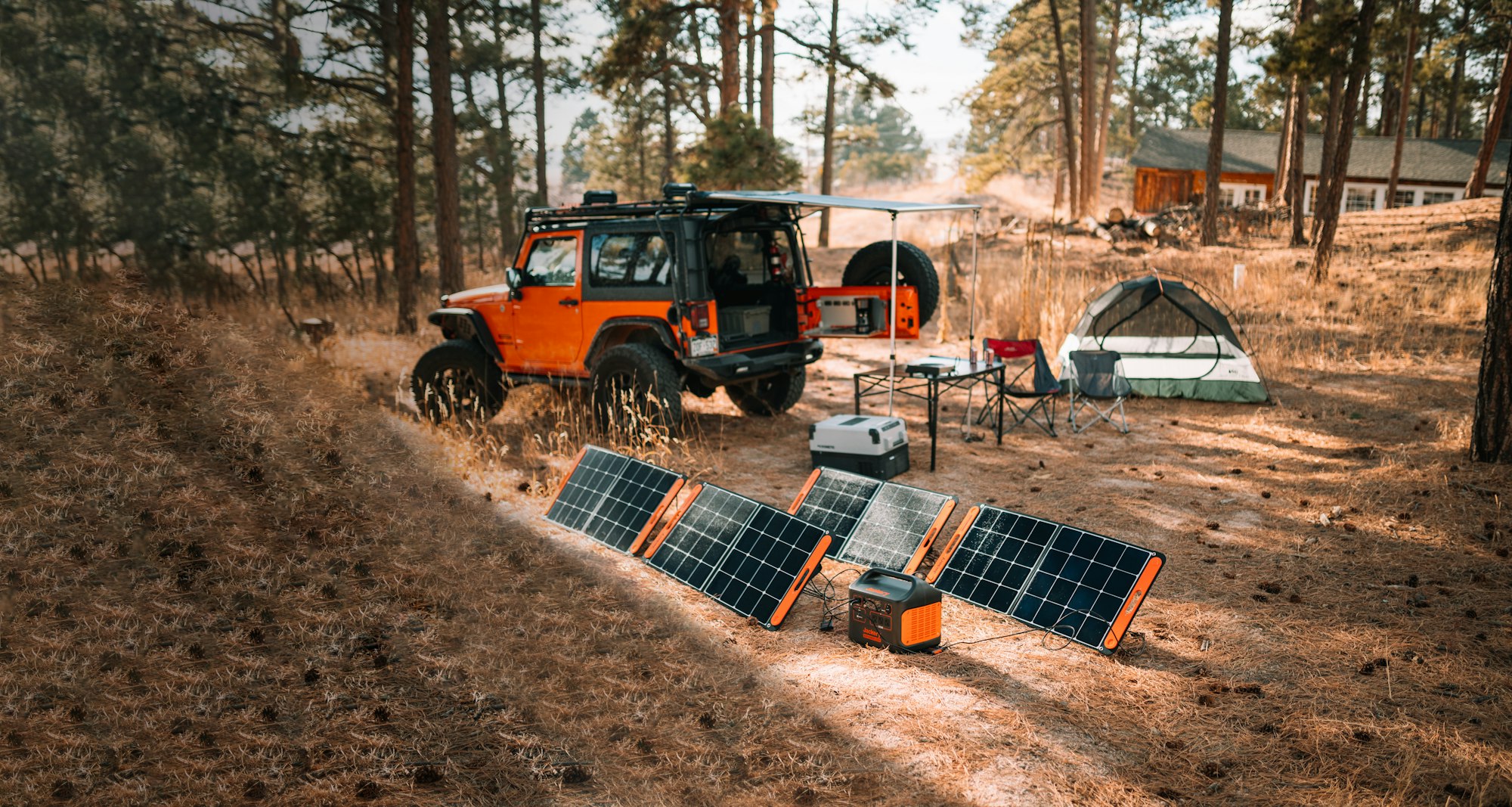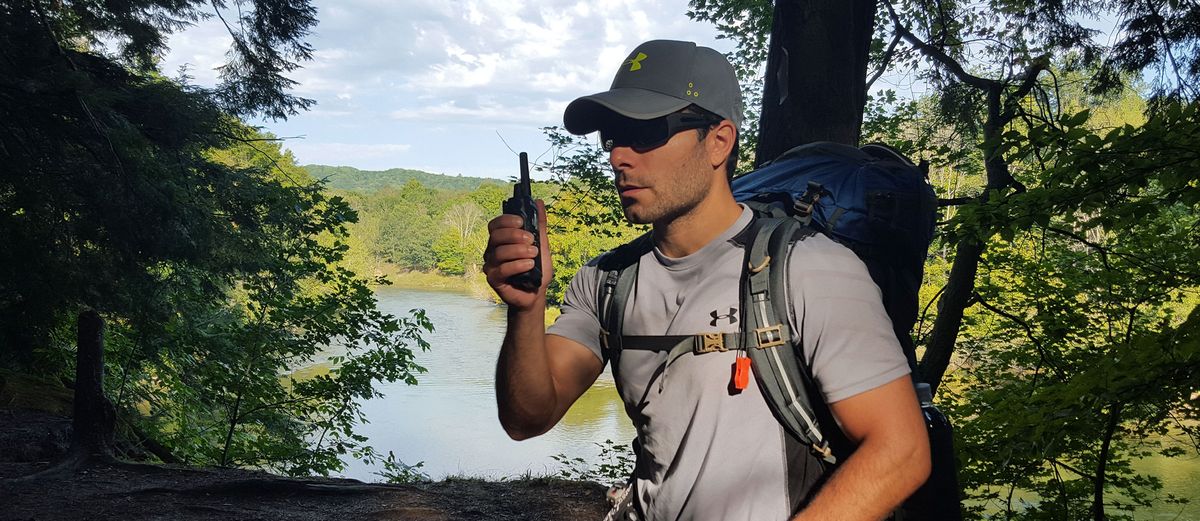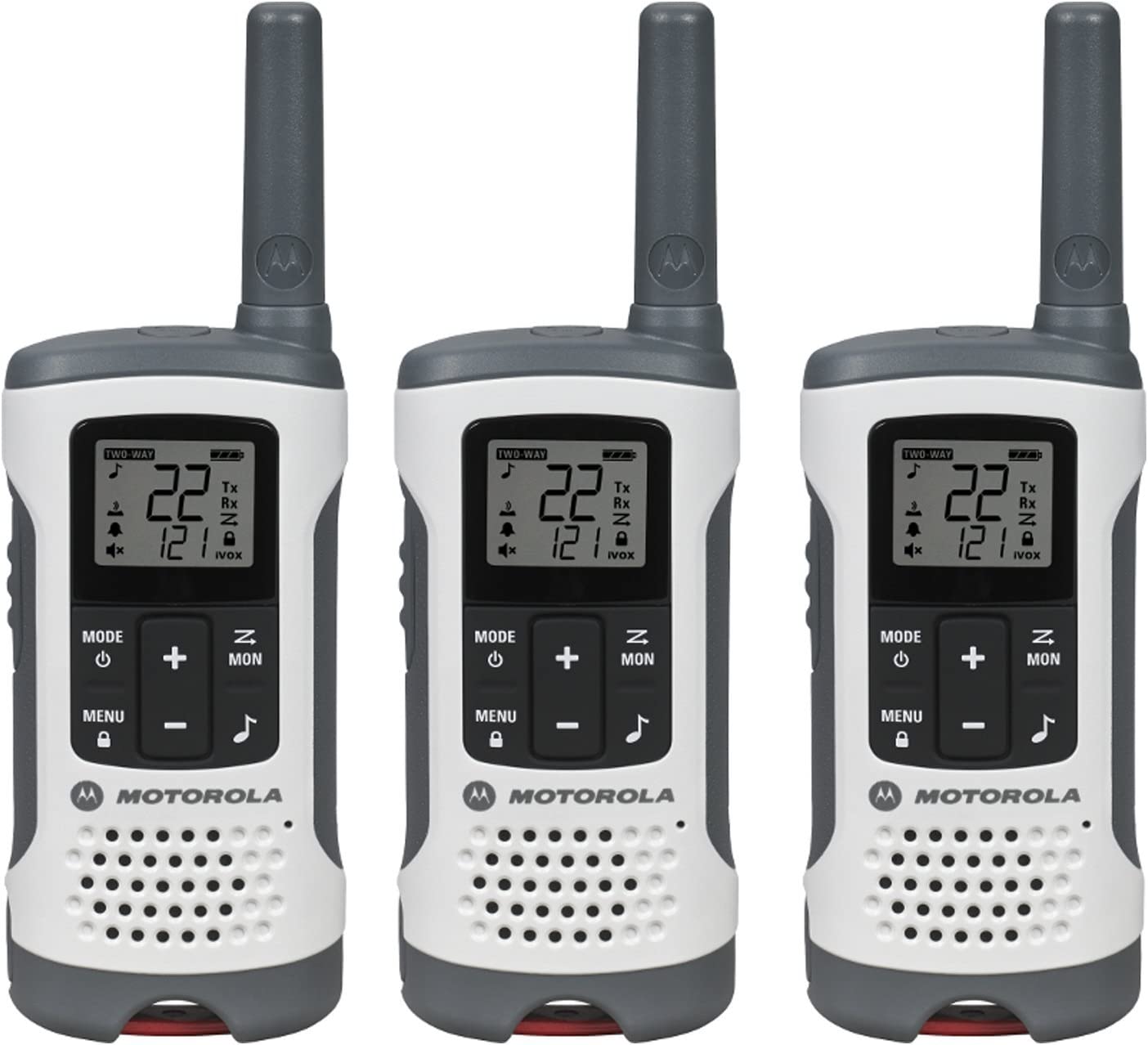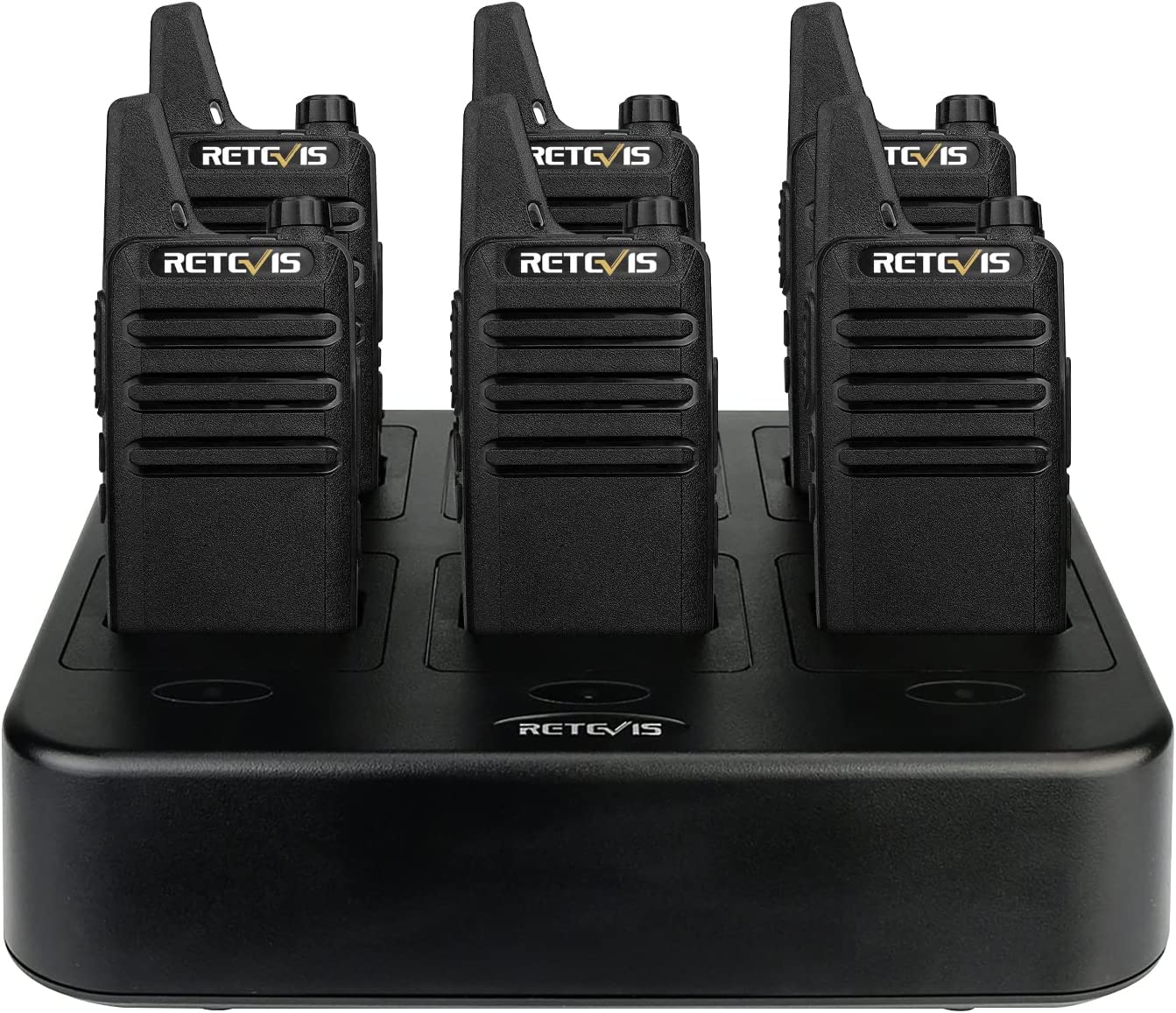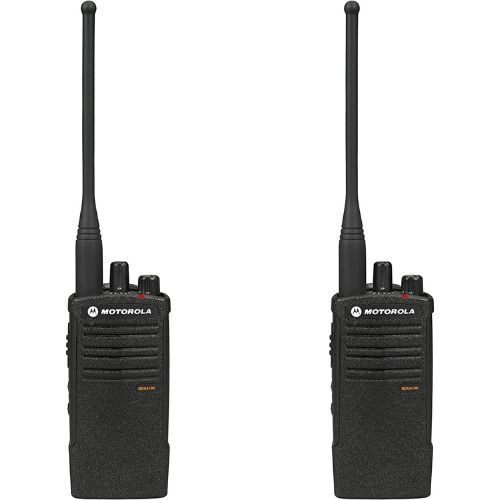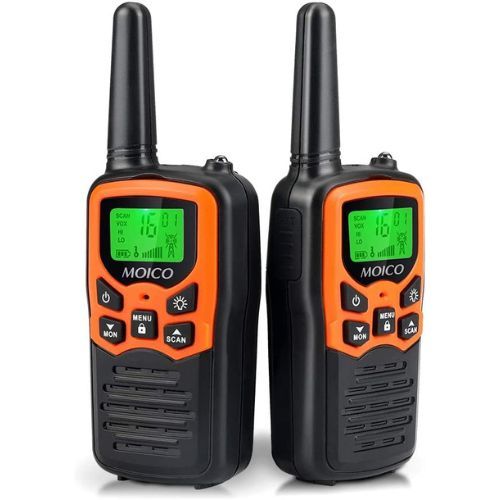Content Summary
From its inception in World War II, the Walkie-Talkie's usefulness has been widespread. The radio transceiver enabled communication between soldiers, making it a staple in military aid.
However, it has since seen an even more extensive application in the civilian world. Thanks to the advances in technology and production, these hand-held portable devices have evolved to be multifunctional communication tools. But, the question still remains, in this era of smartphones and Wi-Fi, are walkie-talkies still usable?
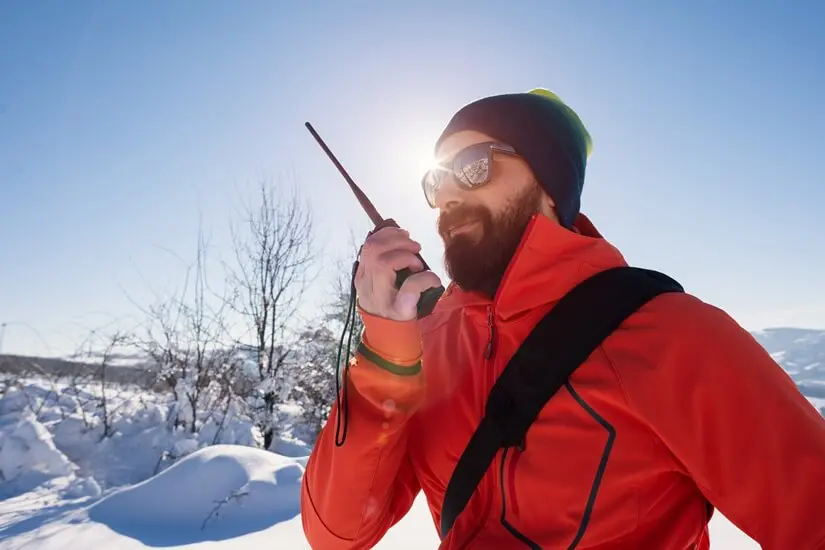


Let's Delve Deep Into the World of Walkie-Talkies
The primary purpose of walkie talkies has not changed; they were created to maintain contact and provide smooth communication over the air. They are designed to be rugged, durable, and can cover longer distances than most other devices, making them the ideal tool to use where a cellular network signal isn't available.
Walkie talkies offers an affordable solution to businesses and organizations that require close-range communication, such as security personnel, event organizers, logistics companies, and search and rescue teams.
Apart from their standard function as a walkie talkie, they can have additional features like Bluetooth connectivity, GPS tracking, text messaging, and even access to emergency services.

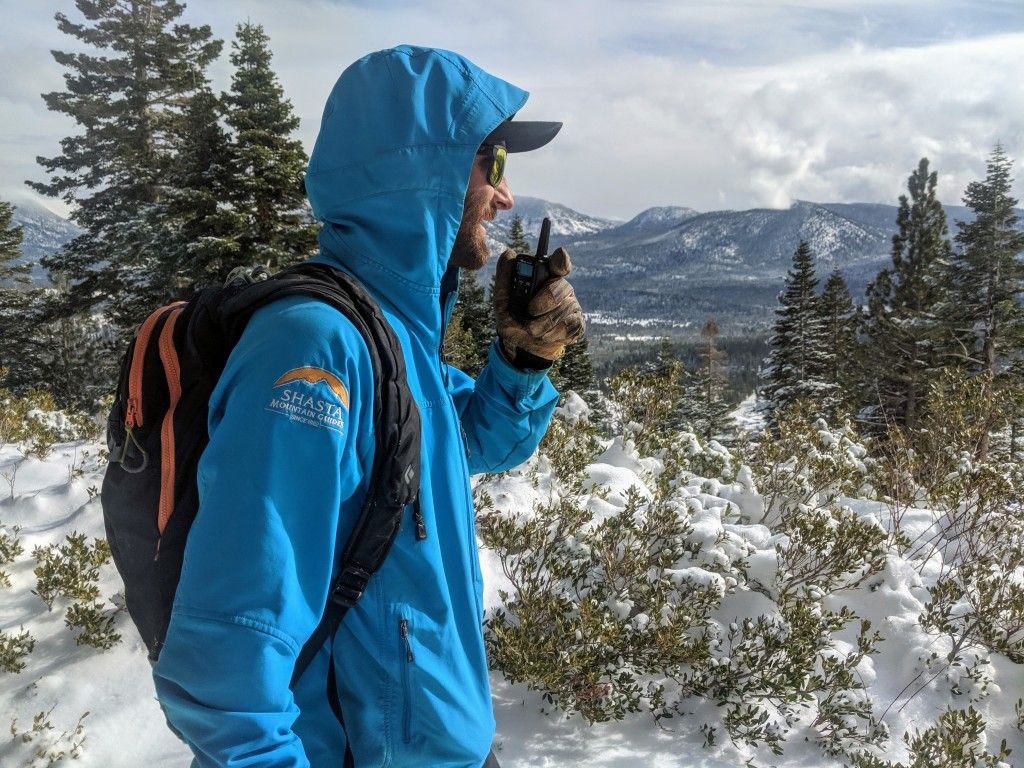
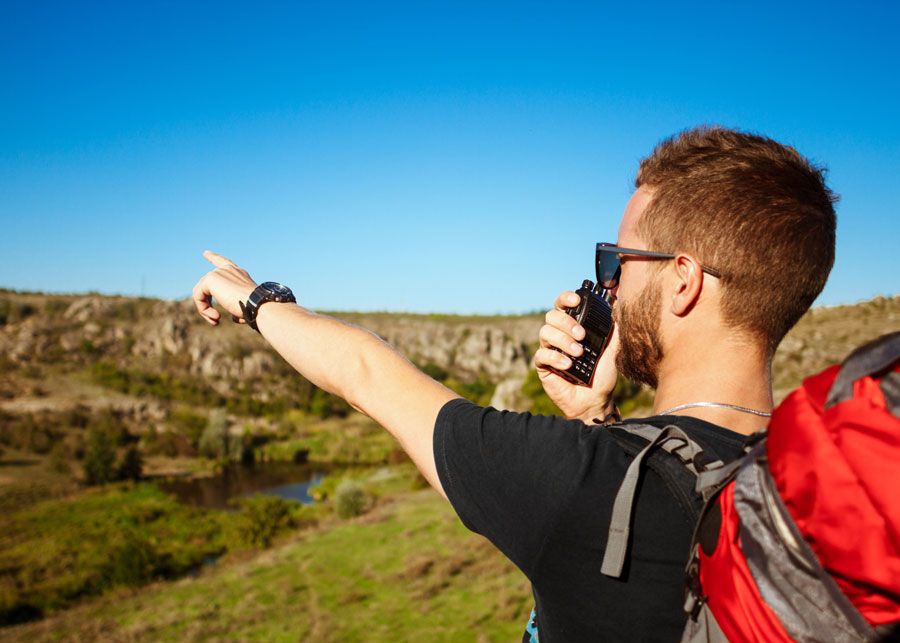

These days, some models of walkie talkies can be connected to smartphones for added functionality. Through an app, users can send and receive voice messages, location sharing, and even broadcast transmissions across a broader range.
While their use has been supplemented by smartphones, walkie talkies retain their advantage in harsh or dangerous environments. They work flawlessly even when the cellular network is down, and unlike phones, they do not need to be charged frequently. Moreover, walkie talkies are simple to use and come in handy when working in noisy or high-wind areas.
Another advantage of using walkie talkies is that they can establish an instant and secure channel of communication. For instance, during emergencies or outdoor recreation activities, they can be used to form a network and coordinate rescue in real time. This latter point, in particular, illustrates that this tool remains as useful as it ever was and has gained the modern world's versatility and excelled in it.
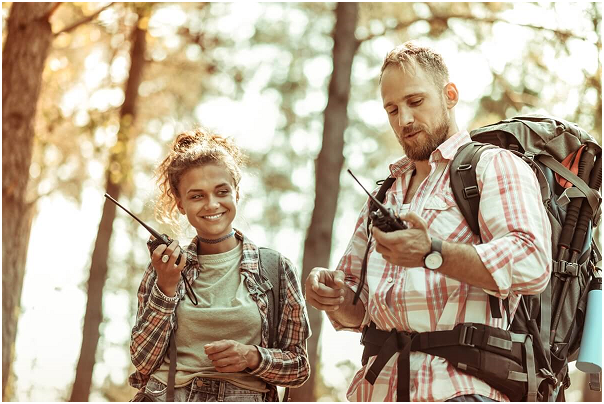
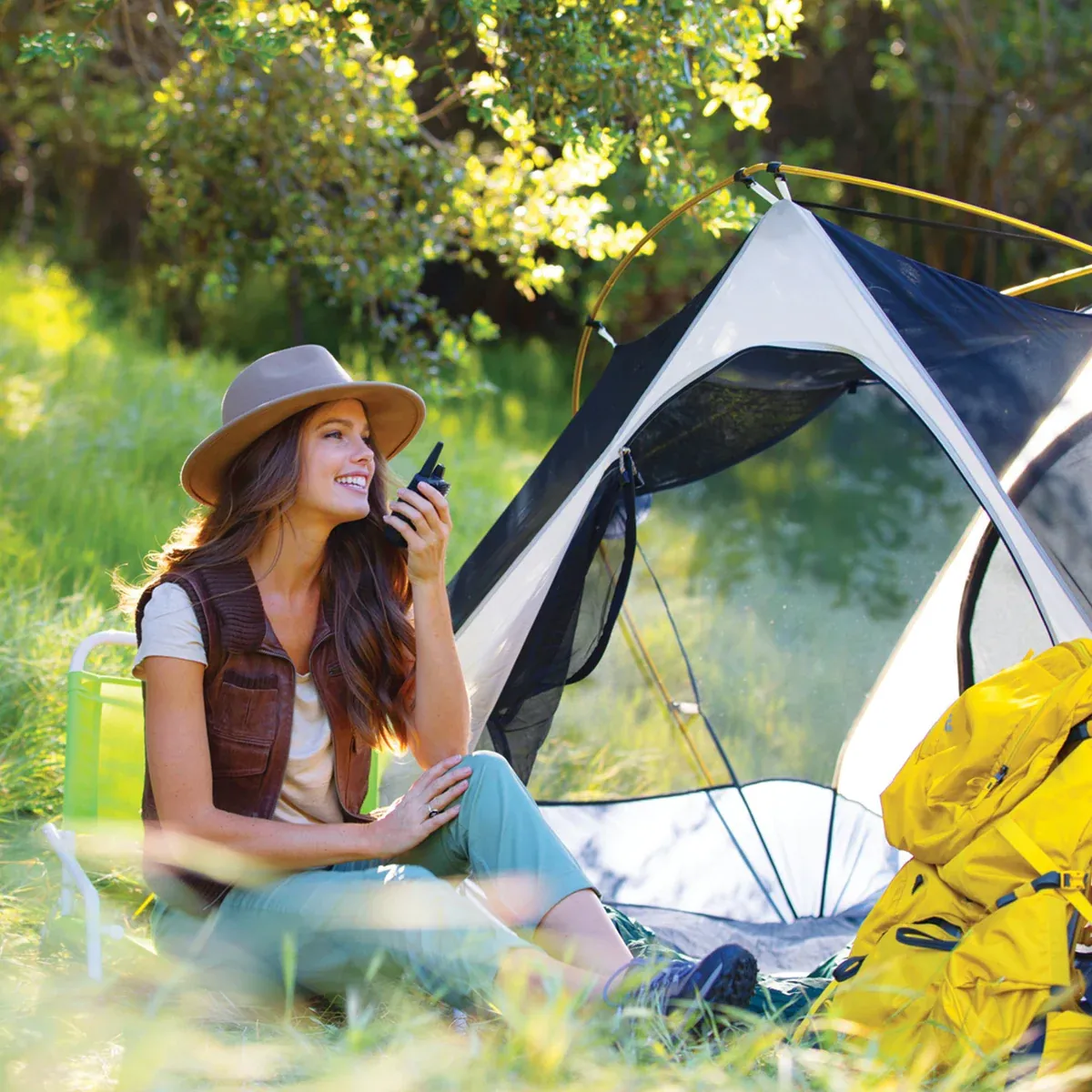
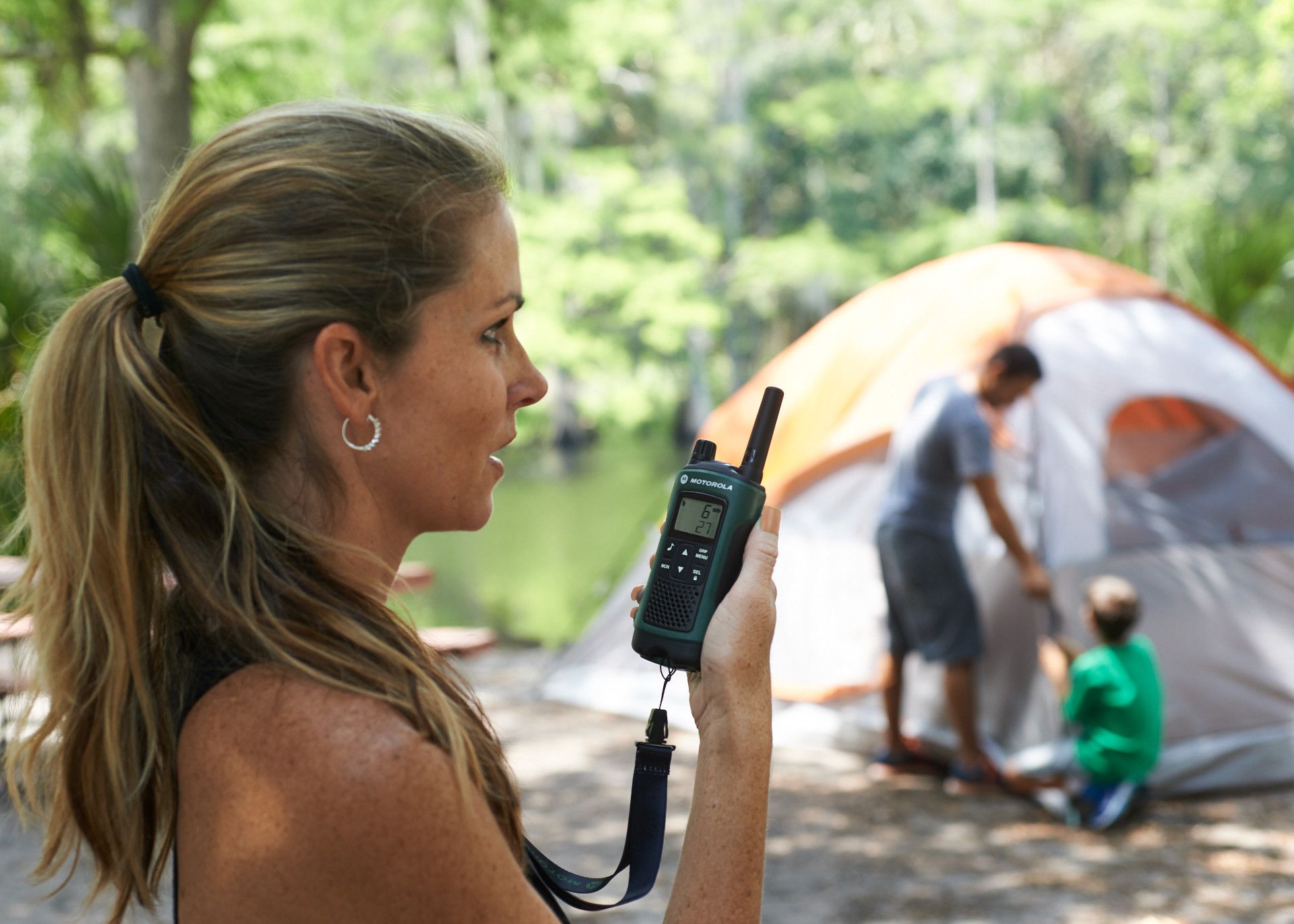
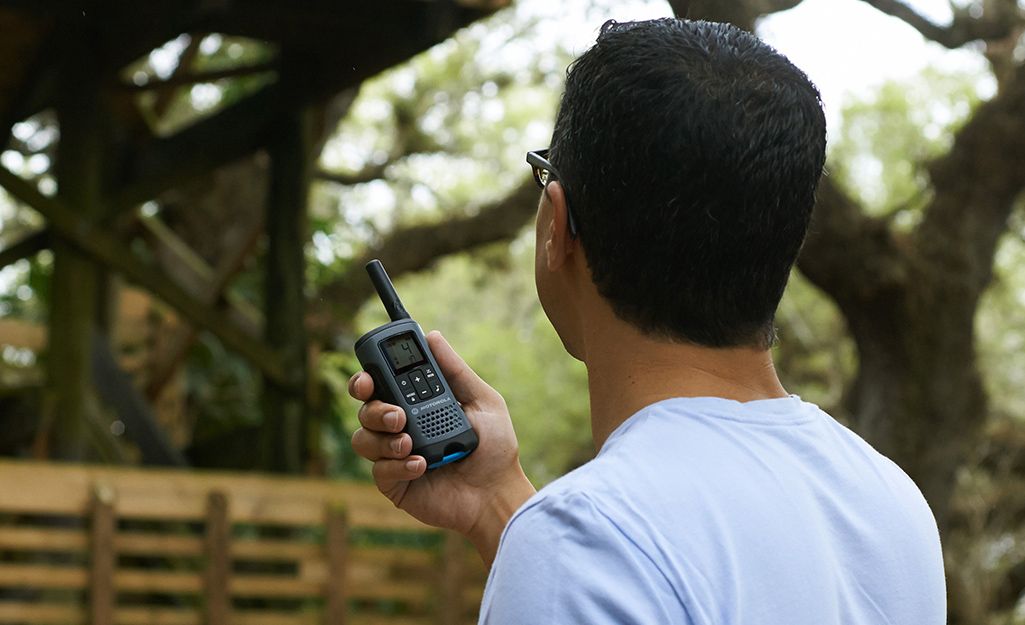
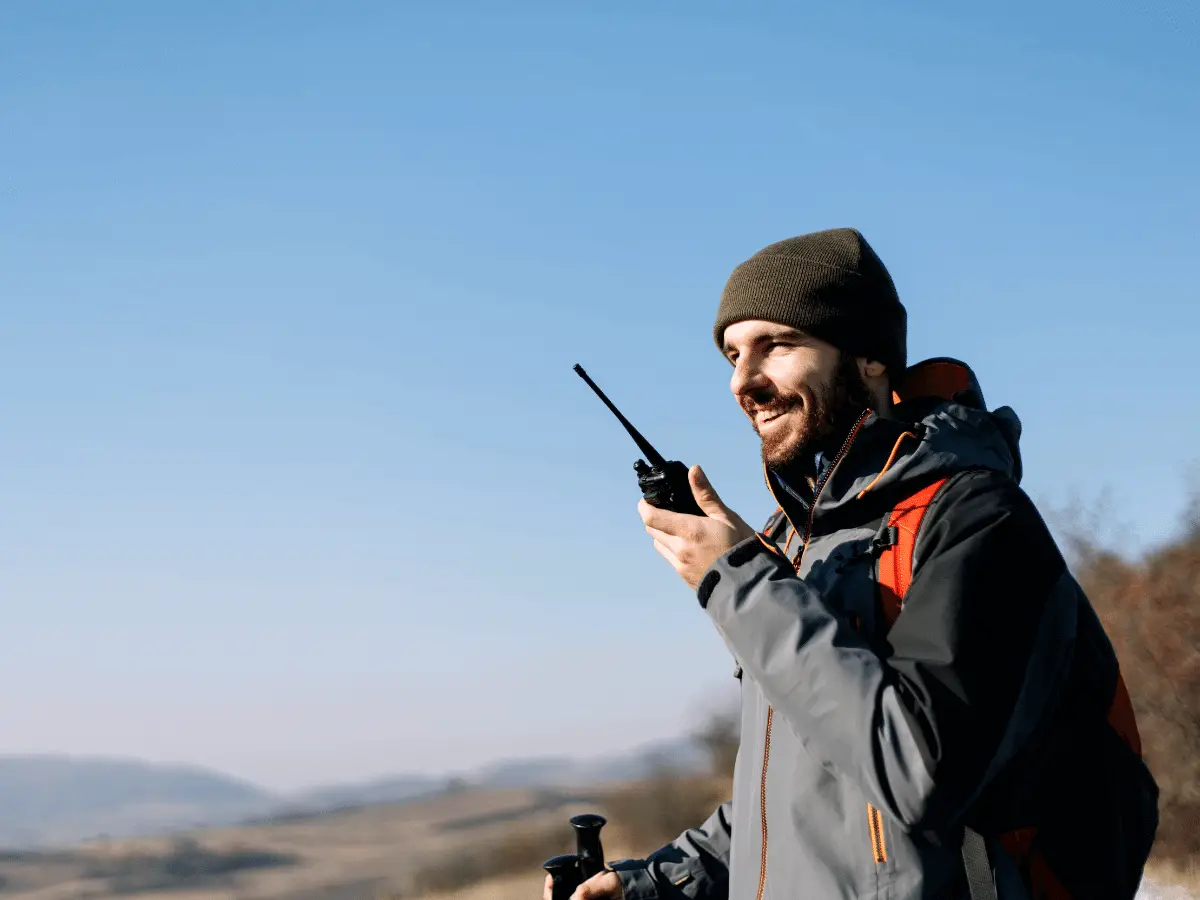
Top 5 Best Rated Walkie Talkies on Amazon:
- Display Type: Lcd
- With a range of up to 25 miles and the freedom to communicate wirelessly, the T260TP lets you stay in touch with family and friends, whether tackling a back country trail or camping in the woods.
- This lightweight, compact and durable radio comes packed with essential features, like NOAA weather channels and alerts, and iVOX/VOX hands-free communication, so it’s easy to stay in touch – and stay safe – no matter what your situation.
2. Retevis RT22 Walkie Talkies Rechargeable Hands Free
- Lightweight and compact walkie talkies RT22 two-way radios are small and lightweight, with a simple one-button push-to-talk operation, providing clear, strong audio for good communication even in noisy environments. The durable design and long battery life will stand up to the everyday wear and tear of your fast-paced business.
- Fluent communication Setting the CTCC/DCS codes or the squelch function helps you block some noise voice and get clear audio.
- Emergency alarm Alerting others once you get into danger. Ideal for first responders and other professionals.
3. Walkie Talkie Motorola RDU4100 12.5kHz 4 Watt 10-Channel Business Two-Way
- 2-Pack includes: 2-Motorola RDU4100 Two-Way Radios, 2-2400 mAh Li-ion Rechargeable Battery, 2-10 Hour Plug-In Charger, 2-Spring Loaded Belt Clip, 2-Antenna
- Range up to 350,000 sq. ft. or 30 floors indoors,10 pre-programmed channels to communicate with separate work groups
- 4 Watts of power,89 UHF business-exclusive frequencies and 121 interference eliminator codes
- Repeater Capability, 3 Voice Scramble settings to reduce eavesdropping
- AA Battery Compatible
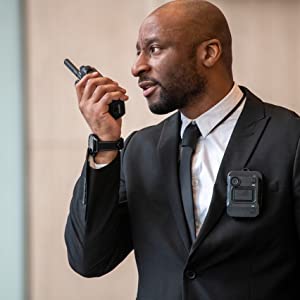
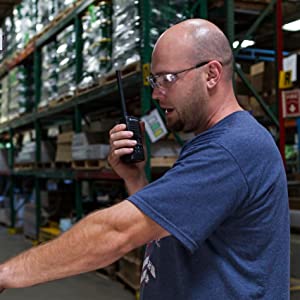

4. Walkie Talkies MOICO Long Range with 22 FRS Channels Family Walkie Talkie
- MOICO walkie talkies have 22 FRS channels plus 99 sets of CTCSS tones (privacy codes). The continuous tone-coded squelch system gives you up to 2178 combinations to help block other conversations. One-to-one or one-to-more communication functions allow more walkie talkies to communicate on the same channel.
- Walkie talkies for adults have easy voice and sound activation transmission (VOX) with 3 sensitivity levels for hands-free operation. You can keep in touch with friends and families at any time when you are camping adventure or in a crowded supermarket.
- Walkie-talkie can reach 3-5 miles communication range in open areas such as rural areas, suburbs, or seaside, etc. where there is no shelter. Walkie-talkies can reach 0.6-1.2 miles in cities or towns. Adverse weather, car(Iron material), voyage, and buildings will affect the range. The actual distance depends on the obstruction of the current environment.
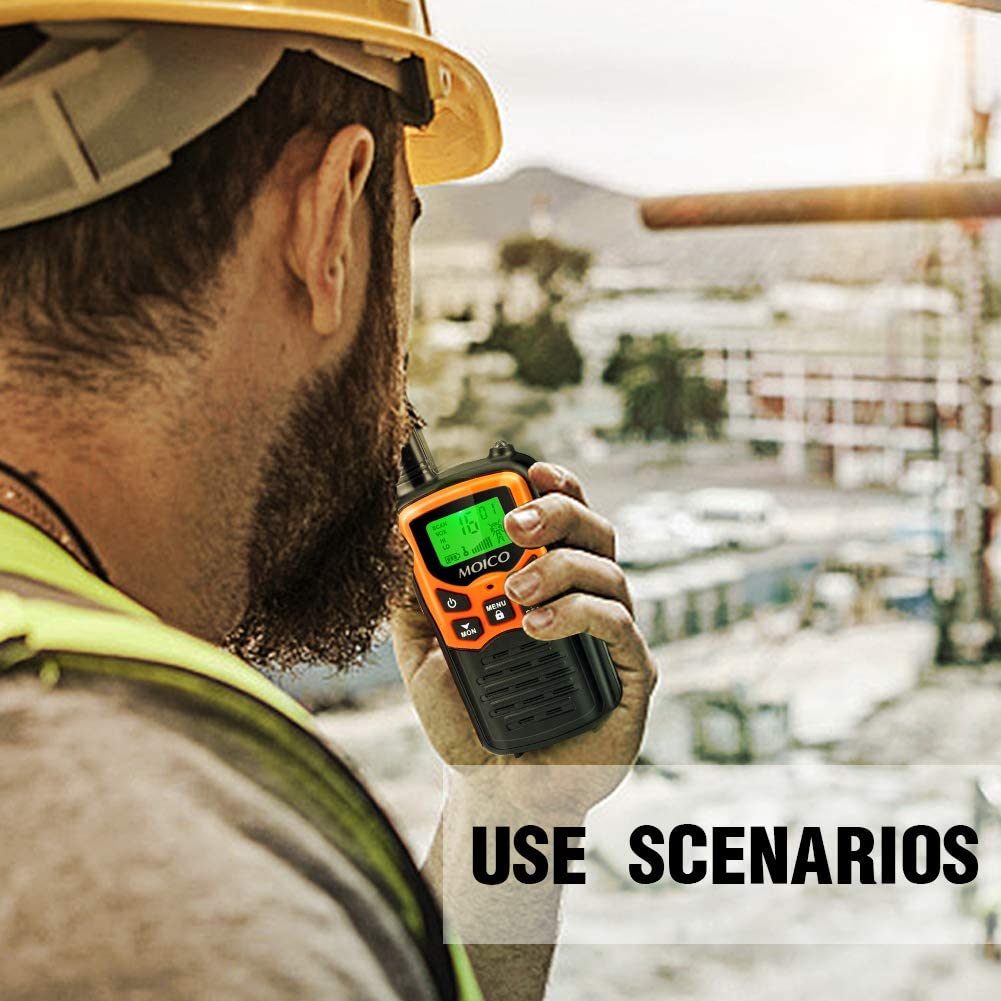
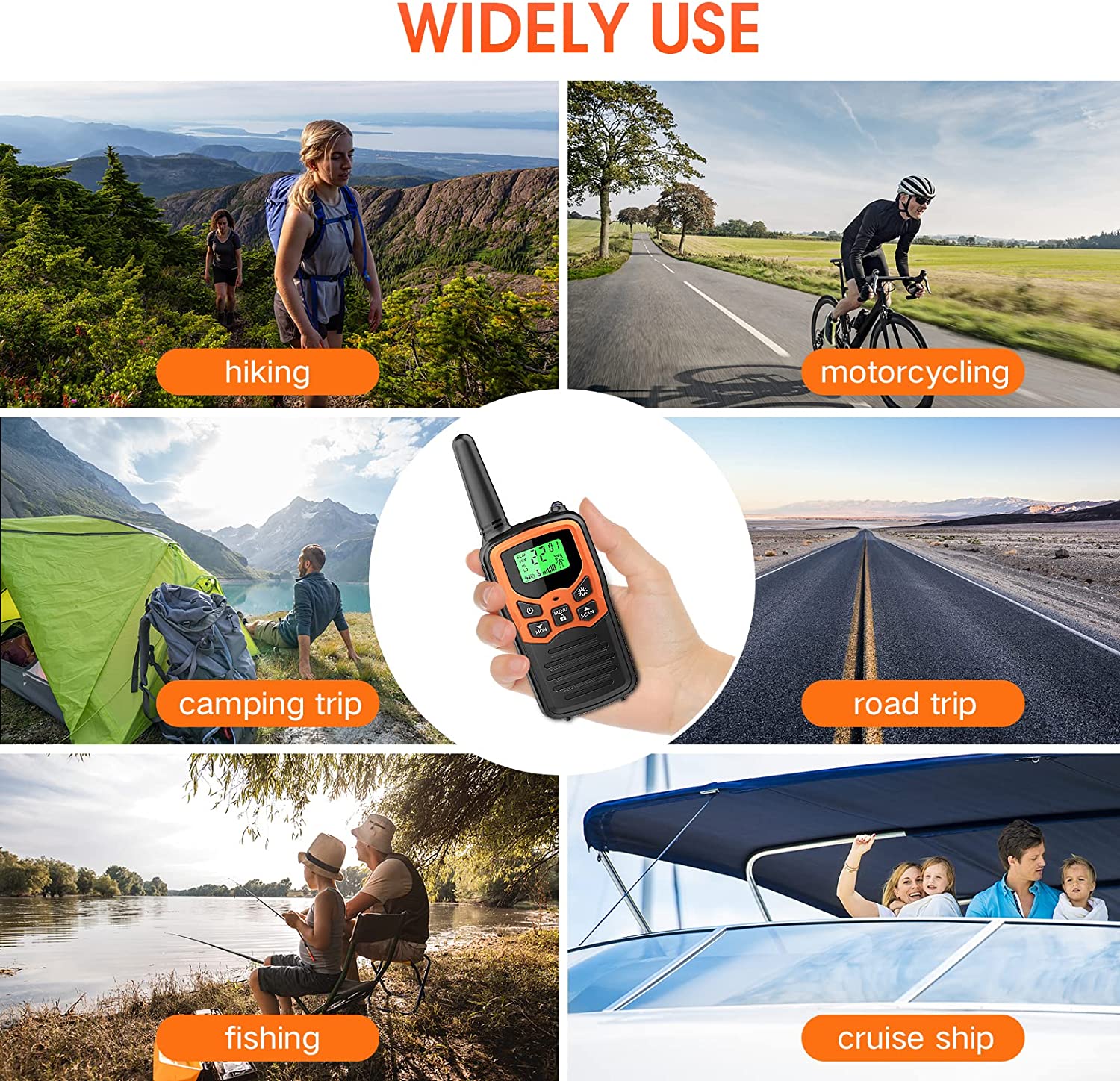
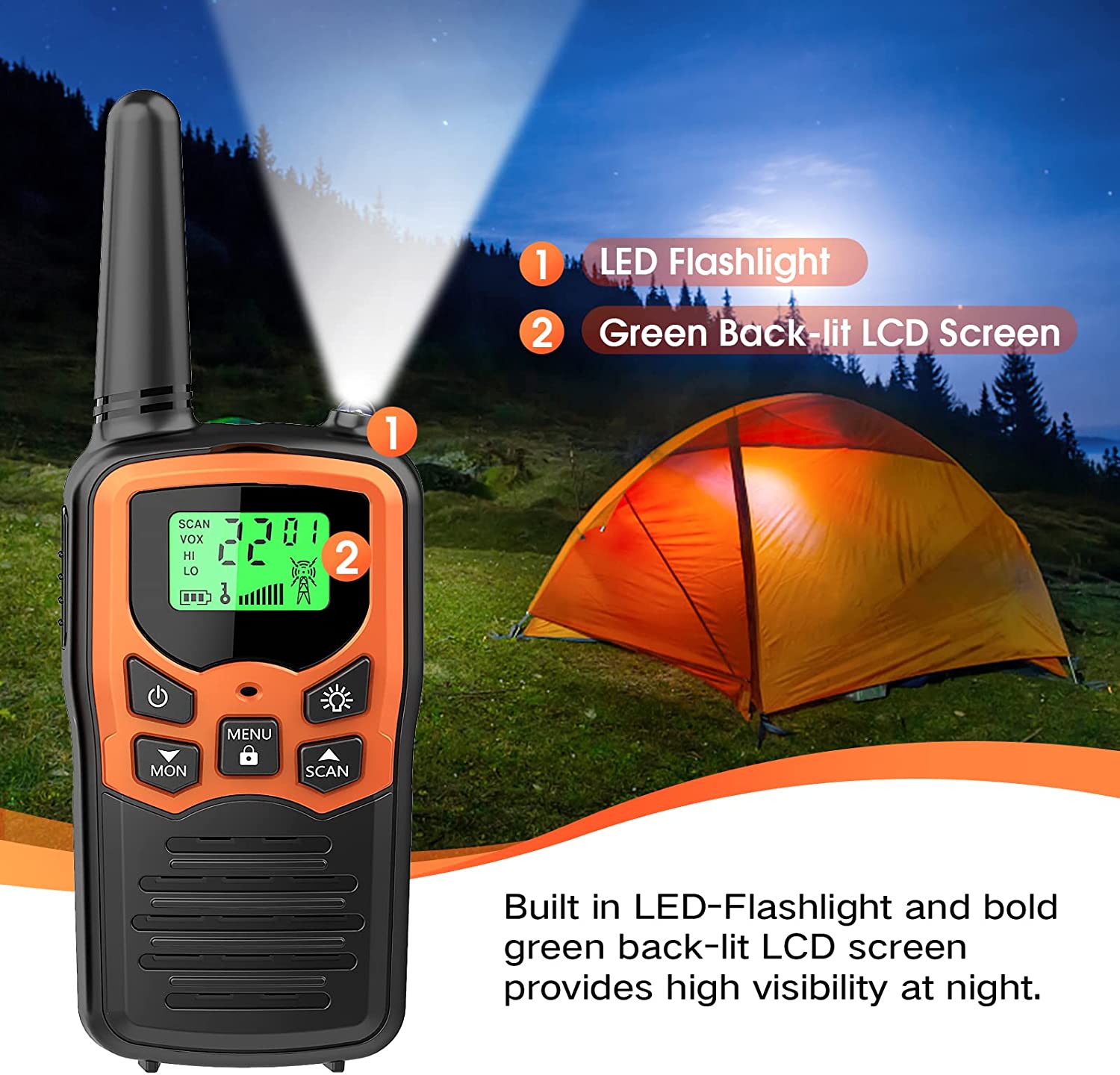
5. Midland – GXT1050VP4 - Handheld GMRS 50 Channel Two Way Radio - Long Range Walkie Talkies
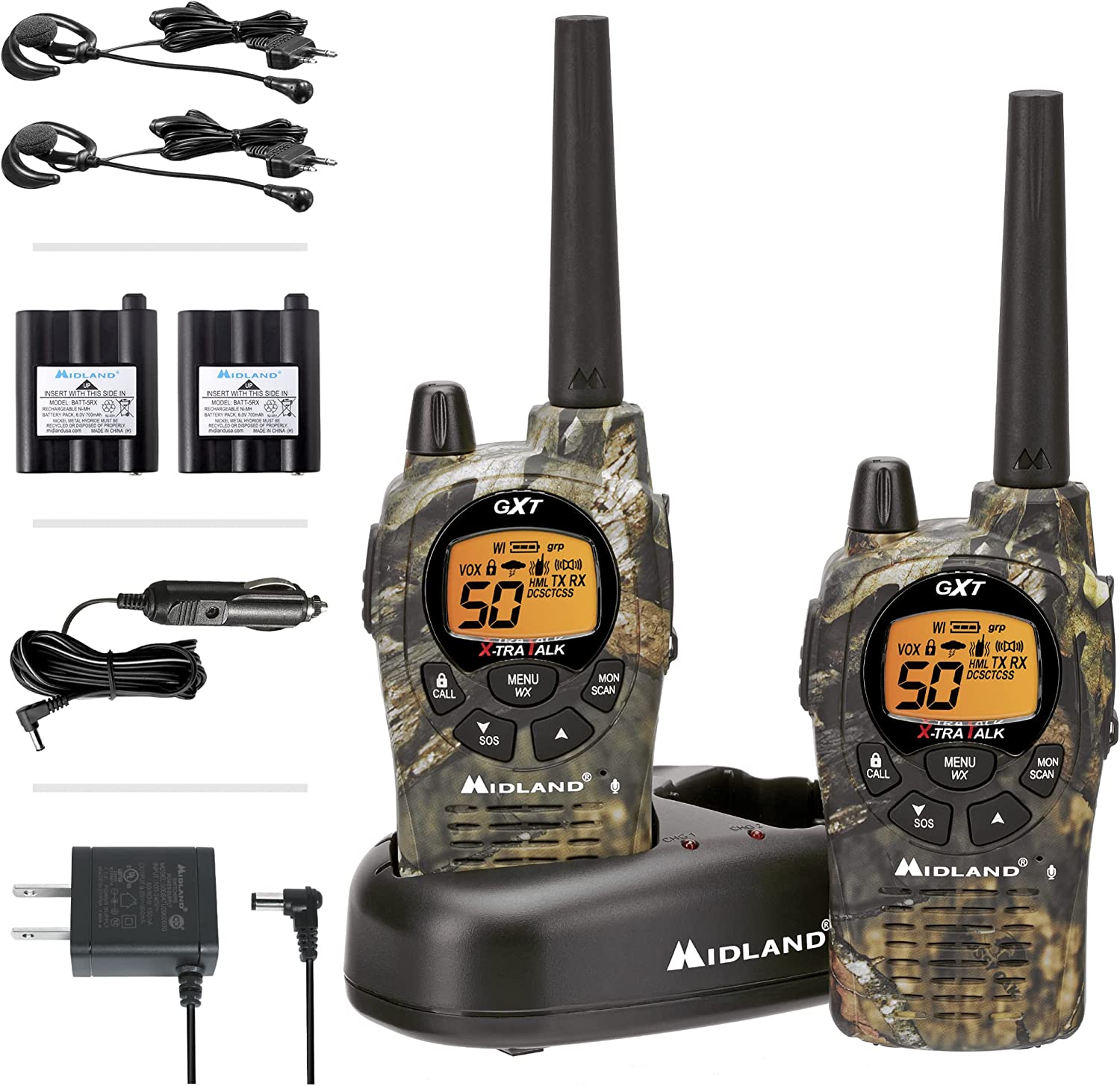
Midland – GXT1050VP4 - Handheld GMRS 50 Channel Two Way Radio Long Range Walkie Talkies
- Two-Way Communication - Stay connected to family and friends or coordinate group outings with the push of a button. Know where everybody is, and that they are safe. These two-way radios come with everything you need, including rechargeable batteries, chargers and headsets.
- These walkie talkies feature 50 GMRS (General Mobile Radio Service) channels, along with a channel scan so you can quickly check for activity. The JIS4 waterproof protection makes these radios splash-resistant, making them ideal for outdoor use.
- Also comes with 5 Animal Call Alerts (turkey, duck, crow, cougar and wolf), a vibrate feature to silence all tones, and the Mossy Oak Break-Up Country Camouflage pattern make this an ideal walkie-talkie for hunters.
- Communicate up to a 36-mile range, depending on variables, with a longer range available in open areas with little-to-no obstructions. EVOX capability (Easy Voice and Sound Activation Transmission) gives you 9 sensitivity levels for hands-free operation while on the move. Privacy codes are available, allowing up to 3,000 channel options to block other conversations and help keep yours private.
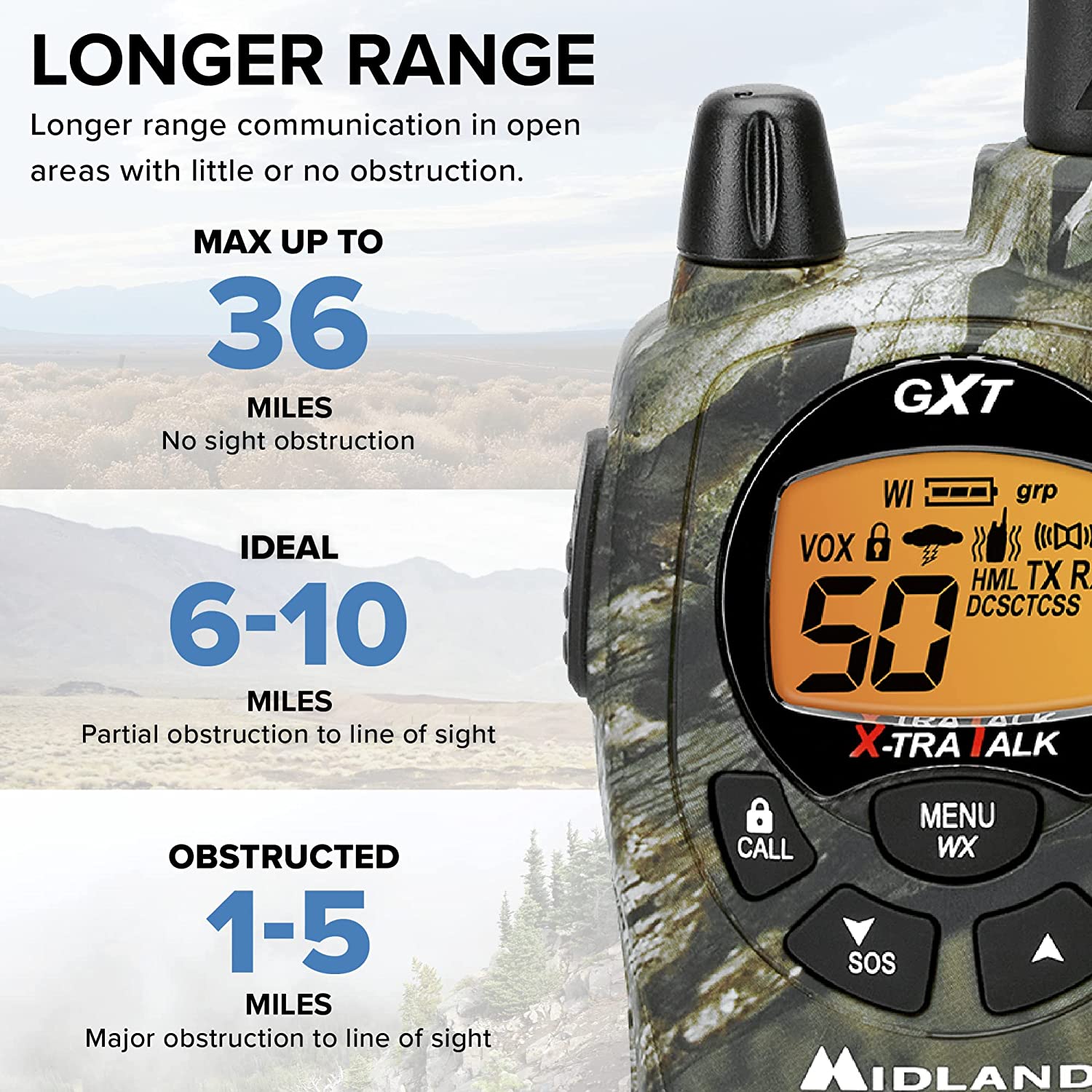
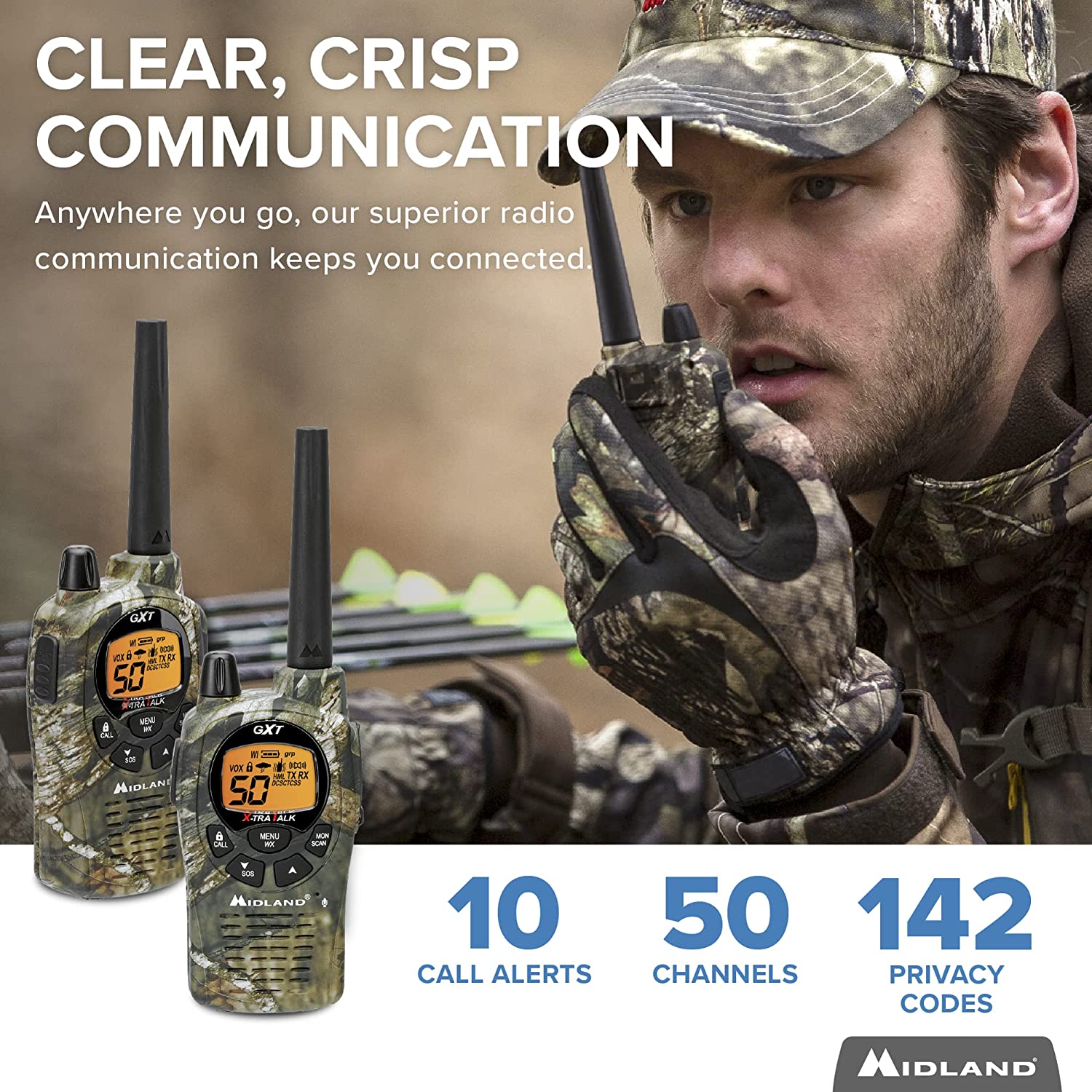
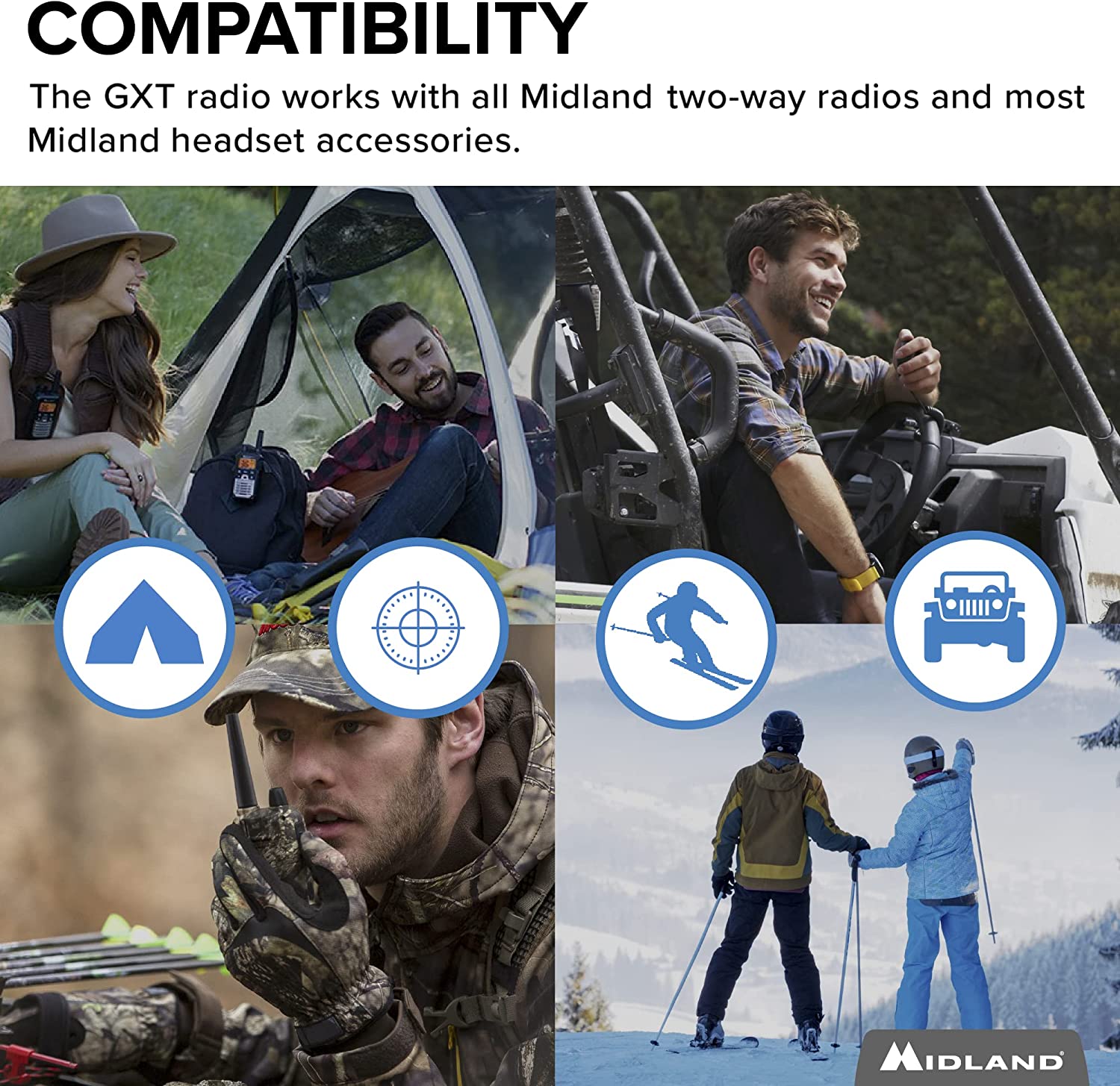
Most FAQs About Walkie Talkies
Are Walkie Talkies Good for Hiking?
WalkieTalkies are a great way to stay connected on your hikes. They offer an affordable, portable means of communication over short distances and can be used even in remote locations. With a range of up to 25 miles, they provide reliable two-way radio communication between two or more people.
Not only do walkie talkies offer clear audio quality over long distances, they also come with extra features such as weather alerts and warning tones which inform you about any changing conditions during your hike. In addition to being compact and lightweight, many models come with rechargeable batteries that can last for days at a time so you don't have to keep replacing them after each use.
Walkie talkies allow ease of use since anyone who knows how to push the buttons can communicate within minutes without needing much training. And best of all, their prices have dropped significantly over the last few years making them incredibly accessible for hikers in any budget range!
Do Walkie Talkies Work Well in the Mountains?
Walkie talkies are designed for long-distance and difficult environments like mountains, making them a great choice for your radio communication needs. They have the capability to transmit signals over far distances due to their powerful antennas.
The increased line of sight gained in the mountains, as well as their ability to bounce off objects make it even easier for Walkie Talkies to work effectively in those challenging areas.
Not only do they work well in the mountains but they also offer great features such as long-range reception (up to 35 miles), VOX mode which prevents conversations from being disrupted by background noise, and hands-free operation when used with headsets or earpieces. Since most walkie talkies come with rechargeable batteries you won't need to replace them frequently - perfect if you're out on extended hikes!
Overall, Walkie Talkies are a fantastic choice for anyone planning an outing up into the mountains and willing to take advantage of modern technology. With reliable performance and useful features, these devices will definitely make a difference when navigating through tough terrain!
What are the Pros and Cons of Walkie Talkie Communications?
The pros and cons of walkie talkie communications depend on the application. Walkie talkies have been around for decades, and they are still widely used today.
One of their chief advantages is that they can provide an instant form of communication when traditional methods like cell phones aren’t available or practical (such as in remote locations). They also make it easy to communicate with multiple people at once, which is useful for search-and-rescue operations.
They are relatively inexpensive to purchase and maintain compared to other forms of two-way radio systems such as GMRS, FRS, HAM radios etc., making them a practical solution for short-distance communication needs where cost is a factor. Plus, no subscription fees or monthly costs are associated with walkie-talkies like some other forms of two-way radio systems.
Compared to cellular phones/smartphones which frequently require battery charging after limited use time; walkie talkies last much longer since they run off AA or similar type batteries or an optional rechargeable pack (depending on the unit).
This makes them ideal solutions for extended operation scenarios such as camping trips—where you don't want to be constantly bothered by low battery concerns during your outdoor adventures!
Another benefit is their ease of use - with only one button needed for transmission you can quickly learn how operate them without needing any technical knowledge beyond basic operational instructions—making it useful even in situations where there’s no time for instruction manuals!
Furthermore if multiple people need communicating with then a headset accessory can be added allowing hands-free usage while walking around without the need to hold down buttons while speaking either--adding convenience and efficiency in larger groups or teams talking over long distances outdoors/indoors etc..
Lastly, we have ruggedness & portability--these units are small & lightweight so they're easily transported making them great options when traveling/hiking giving users a way to stay connected even when away from home/cell phone coverage areas whilst being able to withstand tough conditions due harsh weather environments whether rain snow dust storms whatever else nature throws our way
All these benefits come together forming a nice package allowing different types of users from casual hobbyist hikers to professionals alike take advantage features described above and many more helping increase the overall capabilities of those who choose to invest into this type of equipment...
The Cons:
1) They usually only cover short ranges (upwards of 50 miles depending on power output), preventing their use over large areas
2) Interference from nearby devices often leads to poor audio quality
3) Since all transmissions occur simultaneously anyone could potentially intercept conversations
4) Batteries may leak if left unused for prolonged periods 5) Limited frequency bands limits functionality overall
6) And finally built-in antennae may not pick up signals traveling through walls buildings etc. Thus requiring external extensions be bought to improve connectivity otherwise overall performance might suffer...
Do Walkie Talkie Work Where Cell Phones Don't?
Yes, walkie talkies can work in areas where cell phones don't. This is because their signal operates on a different frequency than cellular phone signals, meaning that it can still connect to the network even in remote locations with poor or no reception.
Walkie talkies use UHF (Ultra High Frequency) or VHF (Very High Frequency) radio waves to communicate over short distances of up to several miles, depending on the device used.
Unlike cellular phones which are limited by cellular data networks and coverage, walkie-talkies work without these restrictions as long as they remain within range of one another.
Walkie-talkies also have advantages over cell phones in terms of communication quality due to their low latency and lack of interference from other users on the same channel.
Walkie talkies usually have an extended battery life since they do not require constant checking for new messages as a smartphone does; instead, users can simply press a button when sending and receiving messages without draining huge amounts of power from the device's battery like a smartphone would need to do constantly.
This makes them ideal for outdoor activities such as camping trips or hiking where cells phones might not be able to stay powered up while away from an outlet for multiple days at once.
For all these reasons it's clear that walkie-talkies are invaluable tools for communicating in more remote areas where traditional cell service isn't available.
While they may not be able to match the convenience that comes with modern smartphones they provide an alternative way of staying connected even where there’s no cellular coverage available!
Can Other Walkie Talkies Not Connected with Yours Hear You?
Yes, other walkie talkies not connected to yours can potentially hear you. When using a walkie talkie, there are multiple factors that determine whether someone outside of your frequency range will be able to hear you and vice versa.
One important factor is the frequency range and power levels used in transmitting or receiving signals. If another device is within the same frequency band and has similar or greater transmitting power levels than your own walkie talkie, then it's possible for that device to receive transmissions from your own device regardless if it is not connected directly with yours.
Some advanced FM radio receivers may also be able to pick up these types of signals depending on how powerful they are relative to the transmission source. Finally, high-powered VHF/UHF radio antennas may also have a chance at picking up such signals from nearby devices if their transmission capabilities exceed those of their receiver limiters by a certain degree (for example 40 dB).
Ultimately, it's highly dependent on what type of equipment both parties are using and how close each party is located in terms of distance; so as long as one user has access to more sophisticated radios & antennas than the other they will have higher chances being heard even without any direct line-of-sight connection between them and their target transmitter(s).
Conclusion
It is quite evident that walkie-talkies are still a reliable communication tool, and their usefulness goes beyond the exploits of the military in the past. They might not fit the mold of our modern and connected world, but they have carved a niche for themselves in industries that require dependable communication.
The Walkie-Talkie is a functioning symbol of a time gone by, but no technological advancements have ever disturbed the foundation of its usefulness. Walkie-talkies prove that sometimes, in something as simple as communication, reliability, and durability beats out most other features.
So, whether you plan a hiking trip, a music festival or an event, grab a set of walkie-talkies; their functionality and reliability, even in areas of little or no 'connectivity,' will leave you grateful you did.
Stay in Touch with a Reliable Connection Walkie Talkie!
Check Out Our Relevant Reads>>>

